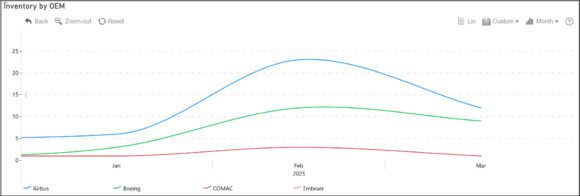 News out of China today announced another ARJ21 delay. The aircraft was meant to enter service in 2007. Now it seems the program is running seven years late, if it even makes the new deadline. This delay provides fresh perspective on programs at Airbus, Boeing, Bombardier and Embraer. The ARJ21 is generally regarded as a copy of the DC9 design with updated engines and systems. In other words, it should not be that difficult to achieve.China has shown itself adept at copying other designs and making them work – for example the J-11 fighter. So why the struggle with a commercial aircraft? Four ARJ21 prototypes are supposed to have completed 2,000 flights.
News out of China today announced another ARJ21 delay. The aircraft was meant to enter service in 2007. Now it seems the program is running seven years late, if it even makes the new deadline. This delay provides fresh perspective on programs at Airbus, Boeing, Bombardier and Embraer. The ARJ21 is generally regarded as a copy of the DC9 design with updated engines and systems. In other words, it should not be that difficult to achieve.China has shown itself adept at copying other designs and making them work – for example the J-11 fighter. So why the struggle with a commercial aircraft? Four ARJ21 prototypes are supposed to have completed 2,000 flights.
COMAC Chairman Jin Zhuanglong blames China’s inexperience in designing, building and certifying commercial jetliners. But in fact China has been in the business of copying commercial aircraft longer than fighters. In the 1970’s there was an attempt to copy Boeing‘s 707 called the Shanghai Y-10 (see below). That too was a failure.
The FAA has said that it will not even start to look at the newer C919 until it completes certification of the ARJ21. Tellingly, even though most of the ARJ21 orders are for domestic Chinese airlines who should not need to be concerned with the FAA’s approval, none have taken delivery, nor appear to be in a hurry to do so, as other, more cost-effective aircraft are available. COMAC, with all the backing the state can provide, does not seem to be able to get the airplane right. But perhaps the most important takeaway is that further delays to the ARJ21 will likely impact future certification of the C919, pushing this airplane further out to the right.
This begs the question as to whether China can actually be successful in building the C919. While a national priority, COMAC still doesn’t seem to have the capability to design and certify a new aircraft, whether as a result of issue like failed wing stress test (which occurred earlier with the ARJ21) or integration of the various subsystems that will be provided by Western suppliers into a coherent unit. Boeing’s experience with the 787 showed what can happen when the pendulum towards outsourcing swings too far in one direction – and COMAC is operating from an even more risky position – having major suppliers develop subsystems without having the wherewithal or experience base to effectively integrate them into the overall aircraft design.
Will the C919 be built? The answer is yes, but not in the time frame planned. China has gone on an acquisition binge looking for aircraft manufacturers to acquire in general aviation to gain experience, with Cirrus and Teledyne Continental Motors as two examples, and an attempt at Hawker Beechcraft that didn’t come to fruition as a third.
They will gain some technology transfer and experience from those acquisitions, as well as from plants for Airbus and Embraer, but it takes time to learn the art, as well as the science, of aircraft design, and the OEMs are now acutely aware of intellectual property theft and are on guard. Second, the western suppliers who want a foothold in China will help them along, to a degree, to ensure a long-term relationship in country. These two factors will help the C919 program eventually fly, but not without further delays. We don’t foresee entry into service for the C919, currently scheduled for 2018, before 2020, and further national loss of face as this program moves farther to the right.
Views: 2





So if Chinese airlines are scrambling for NEO production slots in the mean time,
might they in fact go for a MS-21 which is available sooner and without COMAC’s issues?
Great question